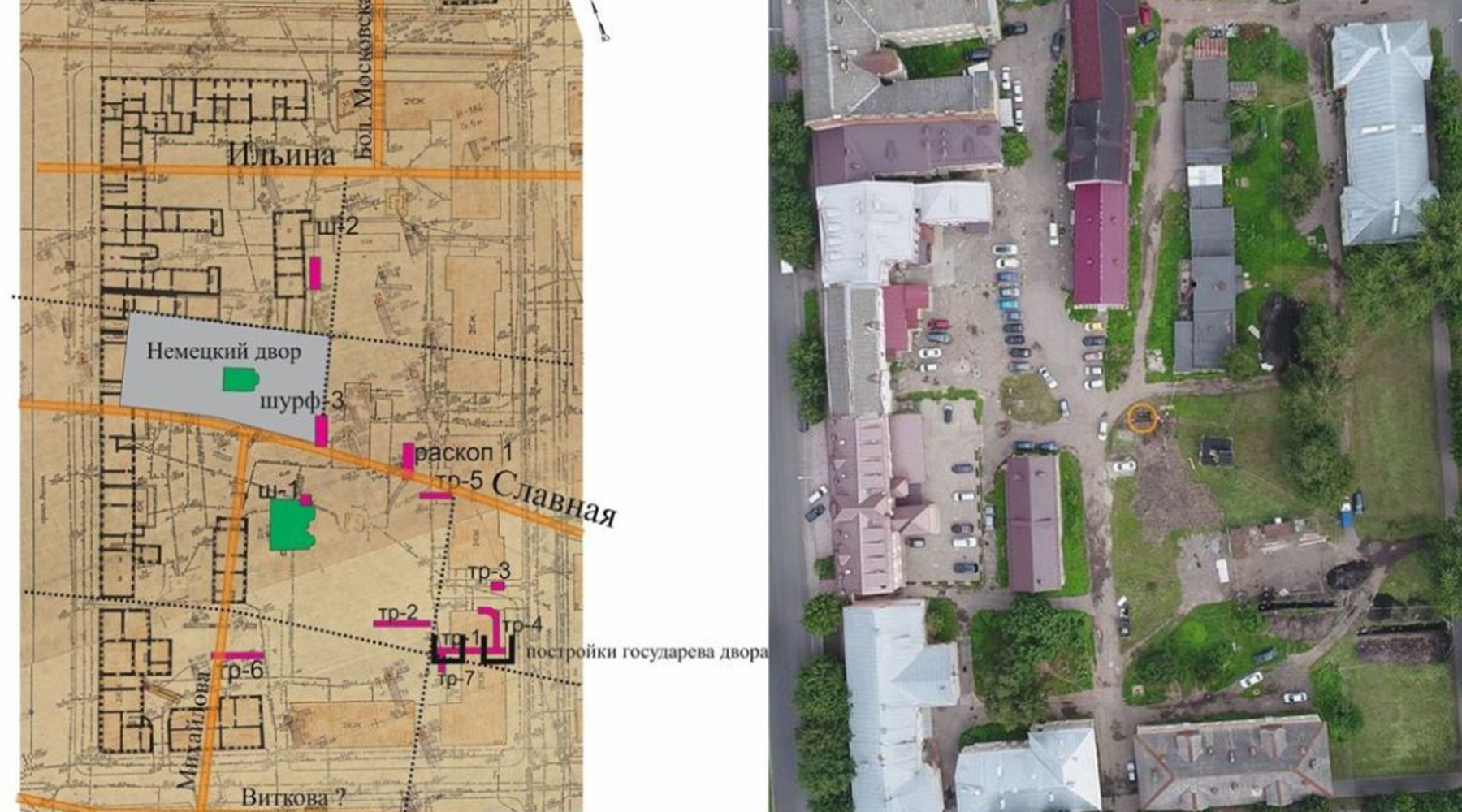A joint expedition of scientists from the Institute of Archeology of the Russian Academy of Sciences, the Novgorod State Museum-Reserve and the Yaroslav the Wise University of Novgorod discovered traces of the German court in Veliky Novgorod.
The discovery was announced by Petr Gaidukov, Deputy Director of the Institute of Archeology of the Russian Academy of Sciences, at the XXXV scientific conference “Novgorod and Novgorod Land.
History and Archeology ".
During excavations in the historical center of the ancient city, archaeologists have found fragments of medieval Slavnaya and Mikhailova streets and the eastern border of the German Court - the official representation and trading station of the Hanseatic League merchants in the 12th-16th centuries.
“Numerous written sources, both Russian and Western European, tell about the existence on the territory of the modern quarter of the 38 German Court.
But archaeologically this place has long remained a blank spot.
The exact location of the German court was unknown, since in various sources its borders are marked quite arbitrarily.
Now we can confidently say that the German court has been found, "said Pyotr Gaidukov.
From written sources, scientists are well aware of the way and laws by which foreign merchants lived on Novgorod land.
The charter of the German court - Novorodskaya skra ordered them to settle in a specially designated place.
The German courtyard was surrounded by a palisade, the gates were locked at night, the territory was guarded.
In the center was the stone church of St. Peter, owned by the Hanseatic League, where merchants stored goods.
After the annexation of Novgorod to Moscow and the restriction of trade relations, the German court ceased to exist at the end of the 16th century.
A detailed description of the adjacent streets, found in the Novgorod scribal book of 1583-1584, helped to determine the place where the trade office was located.
The same source made it possible to find out the area of the German Court - about 1960 m², of which 217 m² was occupied by the cemetery.
German Court, Yaroslav's Court and Bargaining in Veliky Novgorod
© Press Service of the Institute of Archeology RAS
The first prospecting works at the site of the Novgorod quarter # 38 were carried out back in 1999.
Then a stone building and a fragment of the adjacent Slavnaya Street were discovered, but the German courtyard itself was not found.
New excavations began after the administration of Veliky Novgorod in 2019 decided to create an Archaeological Park on the territory under study.
An important result of the work was the discovery of a part of the wall adjacent to the German courtyard of the Church of John the Baptist of the XIV century.
The pits and trenches laid on the site allowed archaeologists to clarify the topography of the medieval buildings of the quarter.
Archaeological pits and trenches (2020)
© Press Service of the Institute of Archeology RAS
The excavations also made it possible to discover the remains of the Great Tsar's Court, which, according to the chronicles, burned down unfinished back in 1580.
To the west of the remains of the Tsar's court, scientists discovered parts of residential estates, the total area of which was up to 1500 m².
Archaeologists believe that these large estates belonged to the Novgorod boyars.
In part, this assumption is confirmed by the seals found on this site associated with the Council of Masters - the highest governing body in Novgorod.
In 15 meters from the open church of St. John the Baptist, archaeologists discovered the pavement of Bolshaya Breakdown Street and the palisade of the German Court.
Scientists managed to establish the length of its eastern border - about 60 m.
In the course of work at the site, archaeologists have collected a significant collection of ancient household and household items of Western European origin.
These include a wooden tag with the sign of a Hanseatic merchant, sovereign and state hanging lead seals of the 15th century, Livonian coins of the early 15th century, fragments of Rhine ceramics, textile seals, as well as a large Hanseatic oak barrel and tiles.
“Since we now know exactly where the medieval Slavnaya and Mikhailova Streets passed, we can confidently determine the boundaries of the German Court: its eastern border ran along Slavnaya Street near the Church of St. John the Baptist, and the western one - under modern houses and a sidewalk on Bolshaya Moskovskaya Street.
In 2021, we propose to find the northern border of the German court, after which it will be possible to outline a plan for its further study, ”summed up Pyotr Gaidukov.

